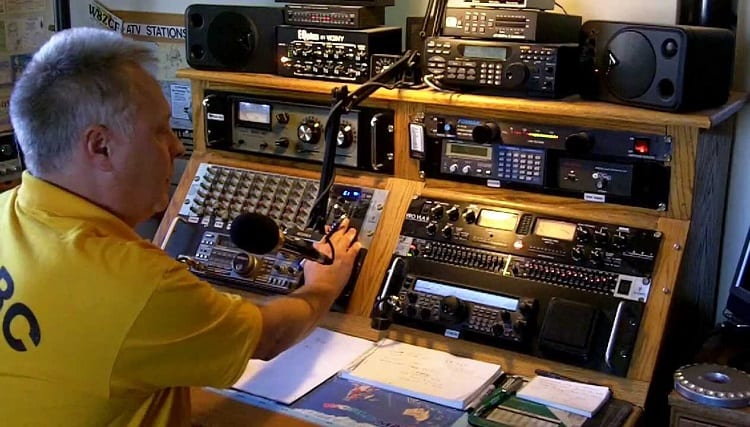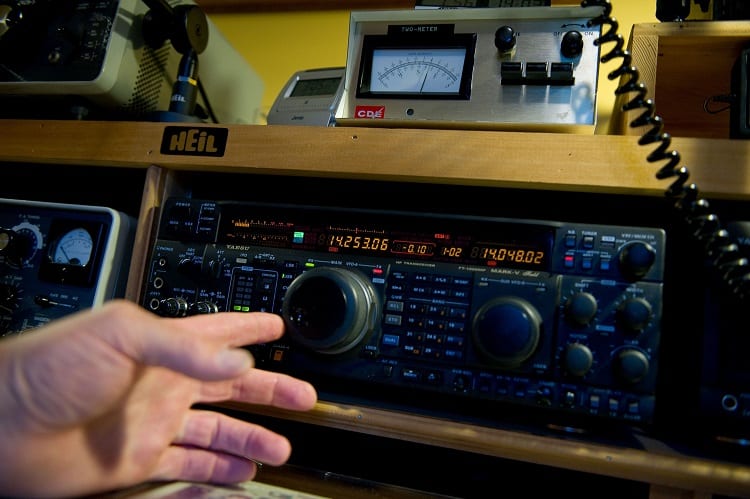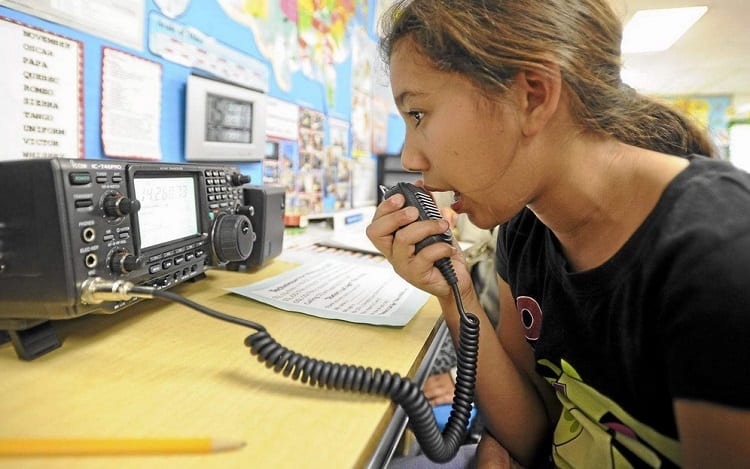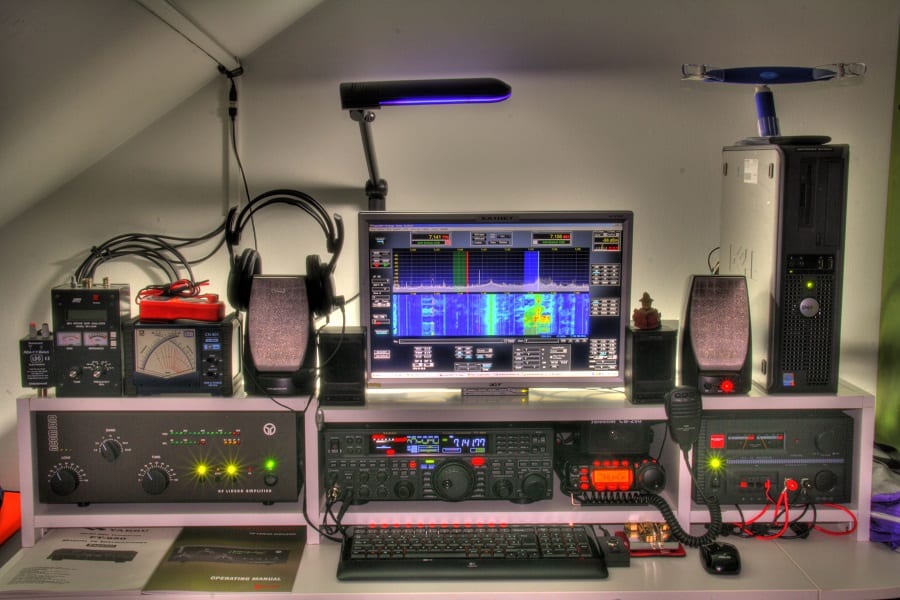When the SHTF, we need to have the essentials, like food, water, and shelter.
One thing that a lot of people don’t think about is communicating with the outside world to know when a disaster actually ends.
That’s where HAM radio comes in. It’s basically an emergency radio system that you can use in many situations, but would it actually work in an SHTF scenario?
This is a HAM radio crash course that goes over everything you need to know, from how far these radios go to what kind of coverage you can expect from them. Power consumption, worst-case scenario use, all of the above. Let’s get into it.
What is a HAM Radio and What Are its Uses?
A HAM radio is a nickname for amateur radio, which is an FCC-regulated series of channels utilized on these radios that operate on a specific frequency.
To break it down, HAM radio is actually called amateur radio. If you see any information about amateur radio, these two are one in the same. Amateur radio is something that anyone can get into with a relatively low skill ceiling. All you really need is the equipment.
In recent years, amateur radio has become a hobbyist’s dream. It’s a service that’s used by 3,000,000 people around the world, and these people are called operators.
In the United States, you need to be licensed by the FCC to operate amateur radio, and stick to a specific set of channels (more on that later).
How Much Power do They Need?

HAM radios can run a lot more power than CB or family radios, which does incur a few problems while you’re prepping.
You’ll have to bring additional batteries along for the ride and/or have alternate ways to charge it if it has a lithium-ion battery. It’s always a good idea to bring a 5V solar panel with you when you prep, since it can work to recharge just about anything you have that’s powered by a lithium-ion battery.
Legally, you are not allowed to create a HAM radio that boats more than 1,500 watts of power. You’ll generally find that handheld HAM radios are about eight watts, or a max of ten watts, so you’re not going to go anywhere near that illegal power threshold.
If you wanted to cast and reach other people in SHTF situations, that’s when you would need a more powerful system. You could consider getting an entire operation rig and broadcasting that way.
If you have a large party or tons of family members, they could use handheld HAM radios while you cast information to them from a headquarters of sorts (located in your home).
The only issue with that is the power consumption. If you’re off the grid and surviving, this is going to eat up a lot of your energy bank.
While amateur radios operate with more power than CB or family radios, you also have access to more frequencies and longer distances that you can cast to and receive from.
What HAM Radio Frequencies Can I Use?
That depends on your classification. There are amateur extra, advanced, novice, technician, and general glasses. You need licenses for each one depending on what you want to do.
To operate on an 80 meter range, you can use any channel from 3.525 MHz to 3.600 MHz if you are a novice or technician class and nothing further.
For general classes, you can use frequencies from 3.525 MHz up to 4.000 MHz. The same applies for advanced and amateur extra classes, which also include the same privileges over phone, image, CW, and RTTY data.
Most handheld HAM radios will operate on a very low frequency. Just like on your PC, when you see something as kHz, it’s smaller than MHz (like kbps download speeds versus mbps). On lower frequencies, you can use 5330.5 kHz up to 5403.5 kHz (total of five channels available).
When you’re using different meter ranges, you’ll have different frequencies available to you, but they will always be in specific ranges.
For example, 30 meter classification allows you to use 10.100 MHz up to 10.150 MHz, while 20 meter classes range from 14.025 MHz up to 14.350 MHz.
Meter classification will change the frequencies, so it’s good to have a cheat sheet available. You can find a full list of HAM radio frequencies and operable ranges on the AARL official website.
Should I Belong to the AARL?
I know they serve a noble purpose, but if we’re trying to stay off the grid, you don’t really need to align yourself with the AARL.
This group is something that hobbyists end up joining to get access to other hobbyists through online forums, and find information on licensing, public service, and technological upgrades as time goes on.
For an SHTF event, you should learn how to operate a HAM radio in its basic format, and work your way up from there. At a certain point, you don’t really need knowledge beyond operation, repair, and licensing unless the entire amateur radio experience mesmerizes you and you want to learn more.
You do not have to belong to the AARL to operate amateur radios, and since they require membership fees, it’s not really worth your time or money. That could be better spent on other preparation measures.
Would They Work in SHTF Events?

HAM radio works because there are operators keeping programs and communications alive on the higher frequencies. That being said, you could be the one to keep a local channel going.
If you have the equipment to broadcast and the equipment to listen in, chances are you’re going to find at least one of the 3,000,000+ global operators trying to reach someone.
The amazing thing is that amateur radio is disaffected by electromagnetic pulses, or EMPs. In the modern era, we’re absolutely worried about EMP attacks wiping our power grids, destabilizing access to media and connection across the internet, and so on.
Amateur radio is the number one to make your communications future-proof against an attack like this.
But here’s the kicker: we can’t just have this all-powerful device in our hands with no downsides. In an SHTF situation that causes you to bug out, you’re going to plan for remaining stealthy.
A campsite in the woods, laying low in sparsely populated areas, the works. HAM radio signals can be tracked, because when you connect, your radio frequency and signal is entered into public data.
I can’t imagine other HAM radio operators trying to hunt you down for your supplies or to cause you harm in an end-of-the-world scenarios, but then again, there are millions of operators.
While it’s highly unlikely that anyone would track your radio signal, you should still play it safe and not use this during times where you don’t have to.
Use your HAM radio around times that you plan to be moving, so even if your signal was tracked, you would be long gone by the time anyone could use that public information against you.
For full disclosure, I want to point out that it’s very difficult to actually track down someone based on signal alone. Most tracking is done by locking onto your signal to find out where you’re registered without being able to pinpoint where you’re standing.
HAM radio operators could find your address, so if you’re hunkering down, you might want to only use HAM radio to listen, not to speak.
Amateur Radio in the US in Case of a Disaster

Amateur radio used to be used to bring people together, like a social media through radio of sorts. It’s far-reaching and comes with fantastic benefits, but in the event of a disaster, what would you use it for?
Tracking unbiased, non-media coverage of whatever issue caused you to bug out in the first place.
You can receive information on military troops and their positioning, where civil unrest is centered around, and other things of that nature. This all relies upon the operators, what information they have, and if they want to broadcast it or not.
HAM radio hobbyists not only know what they’re doing, but they understand and value information. They will want to broadcast information to help people in adverse situations, and at the same time, you could tune in on your radio and report anything you see.
Always Be Prepared
HAM radio can come in handy, but it shouldn’t be your only radio source if SHTF in the near future. You can also use emergency radio systems, which I have an entire guide on.
Communications are vital when the world is going through the ringer, otherwise it’s going to be impossible to know when it’s safe to come home.
Get ready, whether you’re hunkering down or not, and have the necessary communications. HAM radio, emergency radio, and two-way walkie talkies if you have other members of your party.


[lasso rel="emergency-preparedness-more-a-manual-on-food-storage-and-survival-2nd-edition-revised-and-updated" id="35334"]